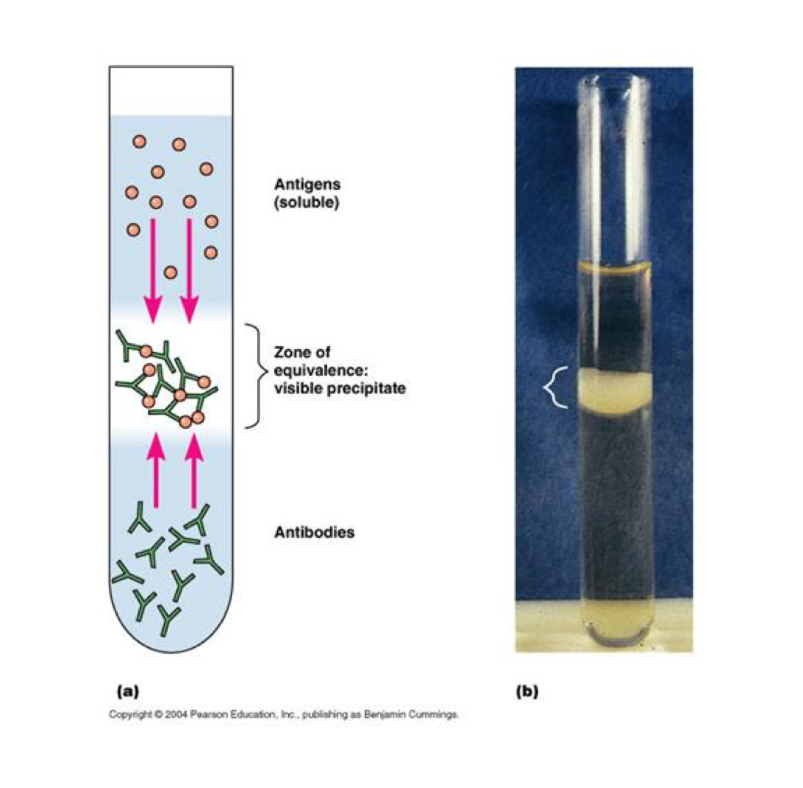immunology and serology exam 2 precipitation and agglutination reactions
1/39
There's no tags or description
Looks like no tags are added yet.
Name | Mastery | Learn | Test | Matching | Spaced |
|---|
No study sessions yet.
40 Terms
epitope, also known as antigenic determinant, is
the part of an antigen recognized by the immune system, specifically by antibodies, B cells, or T cells.
For example, the epitope is the specific piece of the antigen to which an antibody binds.
The strength of the affinity (attraction) depends on
specificity of the antibody for a particular antigen.
The higher the strength, the higher the affinity
Cross-reactive antibody is
the reaction between an antibody and an antigen that differs from what appears to be an unrelated the immunogen.
The more the cross-reacting antigen resembles the original antigen, the __________ the affinity of the antibody to the cross-reactive antigens.
higher
Immunogen
the antigen to which the antibodies were originally generated against.
The two molecules may be completely different, except for similar epitopes that antibody binds to, perhaps with differing affinities.
Avidity
antibody interactions in which multiple antigen- binding sites simultaneously interact with the target antigenic epitopes, often in multimerized structures.
Involves the combined strength with which a multivalent antibody binds a multivalent antigen
Avidity: example with IgG and IgM
IgG and IgM could have the same affinity for an antigen, but IgM has 10 binding sites (pentamer), vs. IgG with 2 (monomer). Thus, IgM would have higher avidity.
Avidity: Individually, each binding interaction may be readily broken; however, when many binding interactions are present at the same time,
transient unbinding of a single site does not allow the molecule to diffuse away, and binding of that weak interaction is likely to be restored.
Precipitation reactions
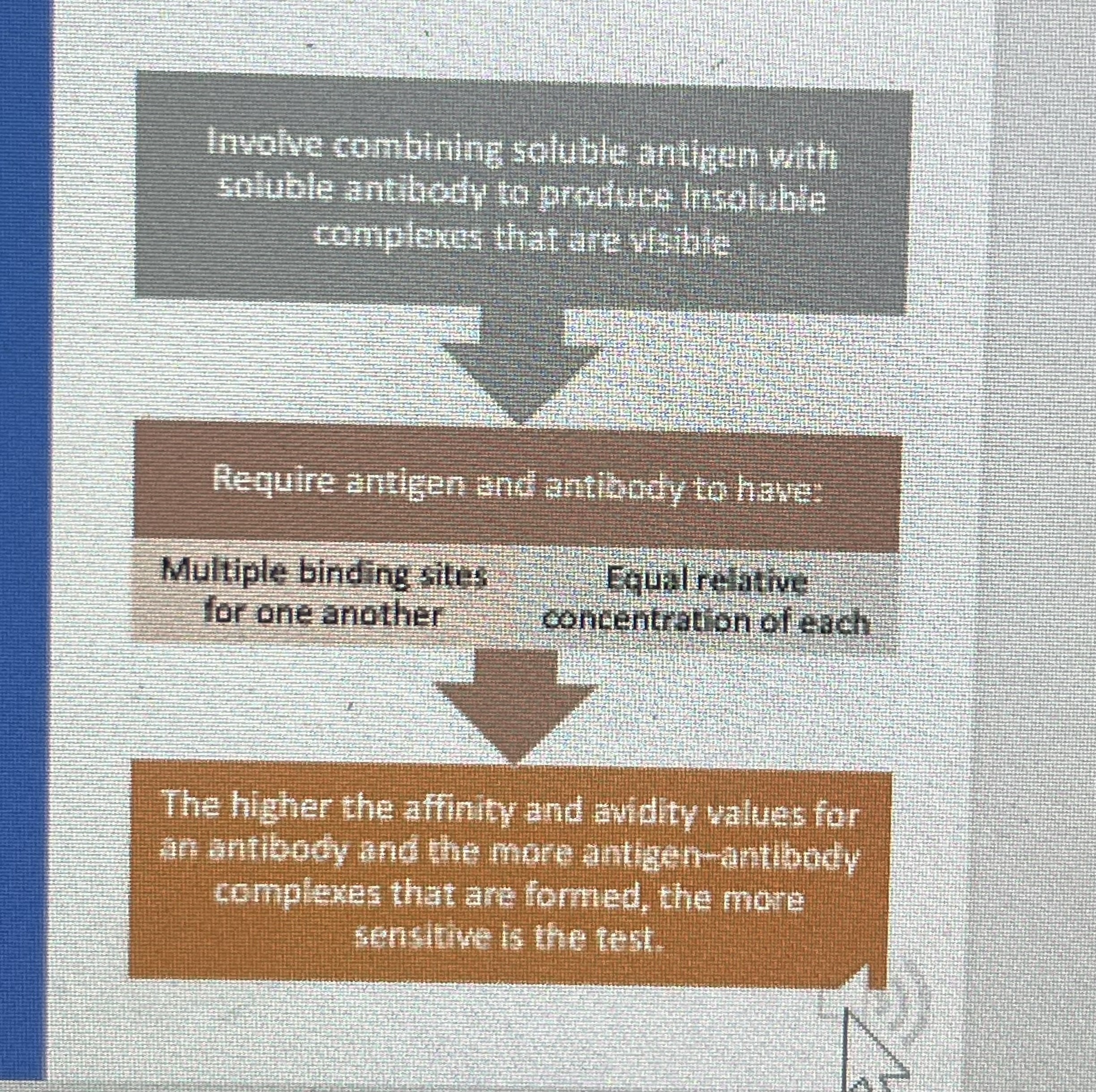
Precipitation Curve: Zone of Equivalence
When increasing amounts of soluble antigen are added to fixed amounts of specific antibody, the amount of precipitation increases up to the zone of equivalence.
When the amount of antigen overwhelms the number of antibody combining sites present, precipitation begins to decline.
To be detectable, precipitation reactions must be run in the zone of equivalence
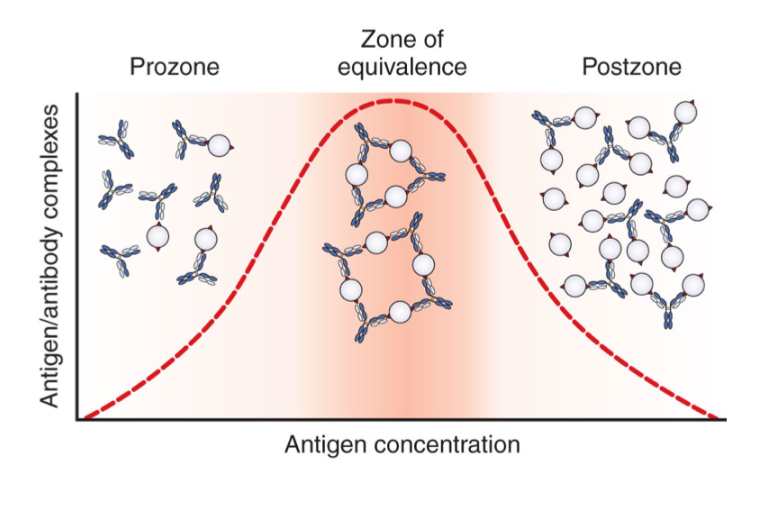
When the amount of antigen overwhelms the number of antibody combining sites present
precipitation starts to decline
Prozone phenomenon (antibody excess)
Antigen combines with only one or two antibody molecules
No cross-linkages are formed that allow precipitant to form
False-negative reactions may occur as a result of high antibody concentration
If a false-negative reaction is suspected, diluting out the antibody and performing the test again may produce a positive result
Postzone phenomenon (antigen excess)
Small aggregates are surrounded by excess antigen - No lattice network is formed
The presence of a small amount of antibody may be obscured, causing false-negative results
-Test is repeated about a week later with a specimen to give time for further production of antibody; If the test is negative again, it is unlikely that the patient has the antibody
Define the ring tests
simple serological technique that illustrates the precipitin reaction in solution.
Precipitation Reaction Techniques
Nephelometry, radial immunodiffusion, Ouchterlony double diffusion, immunoelectrophoresis, immunodiffusion electrophoresis
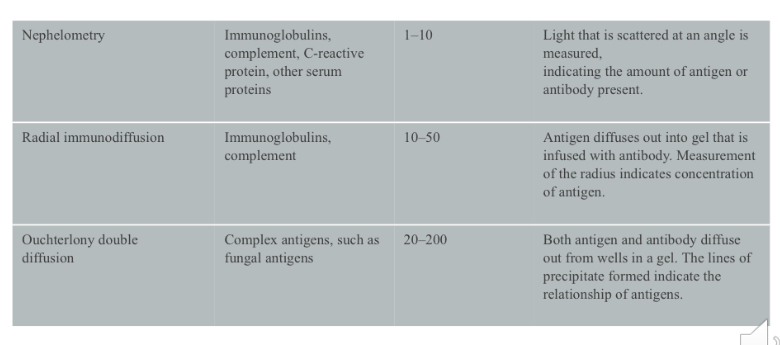
Radial immunodiffusion procedure
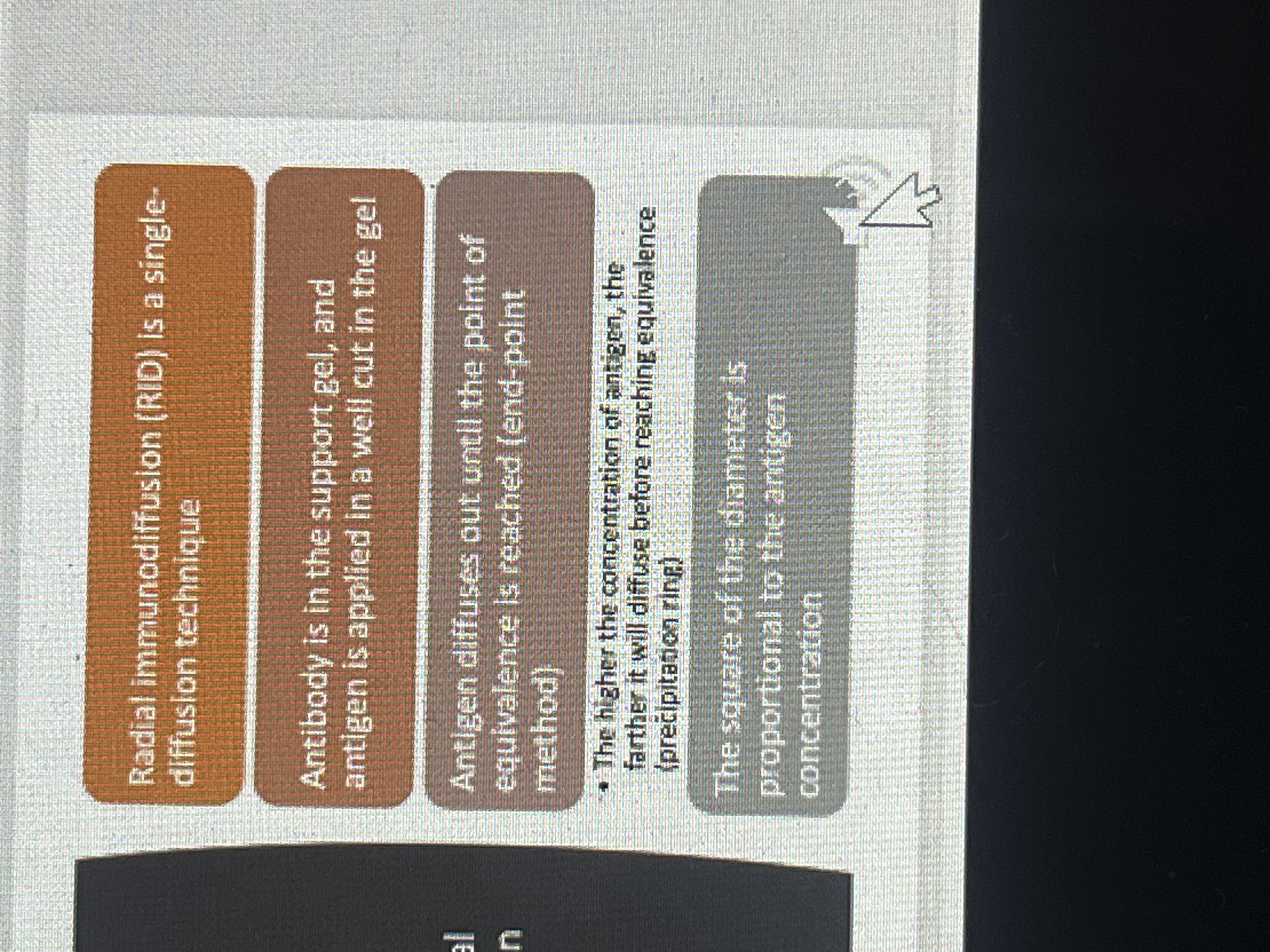
Ouchterlony diffusion
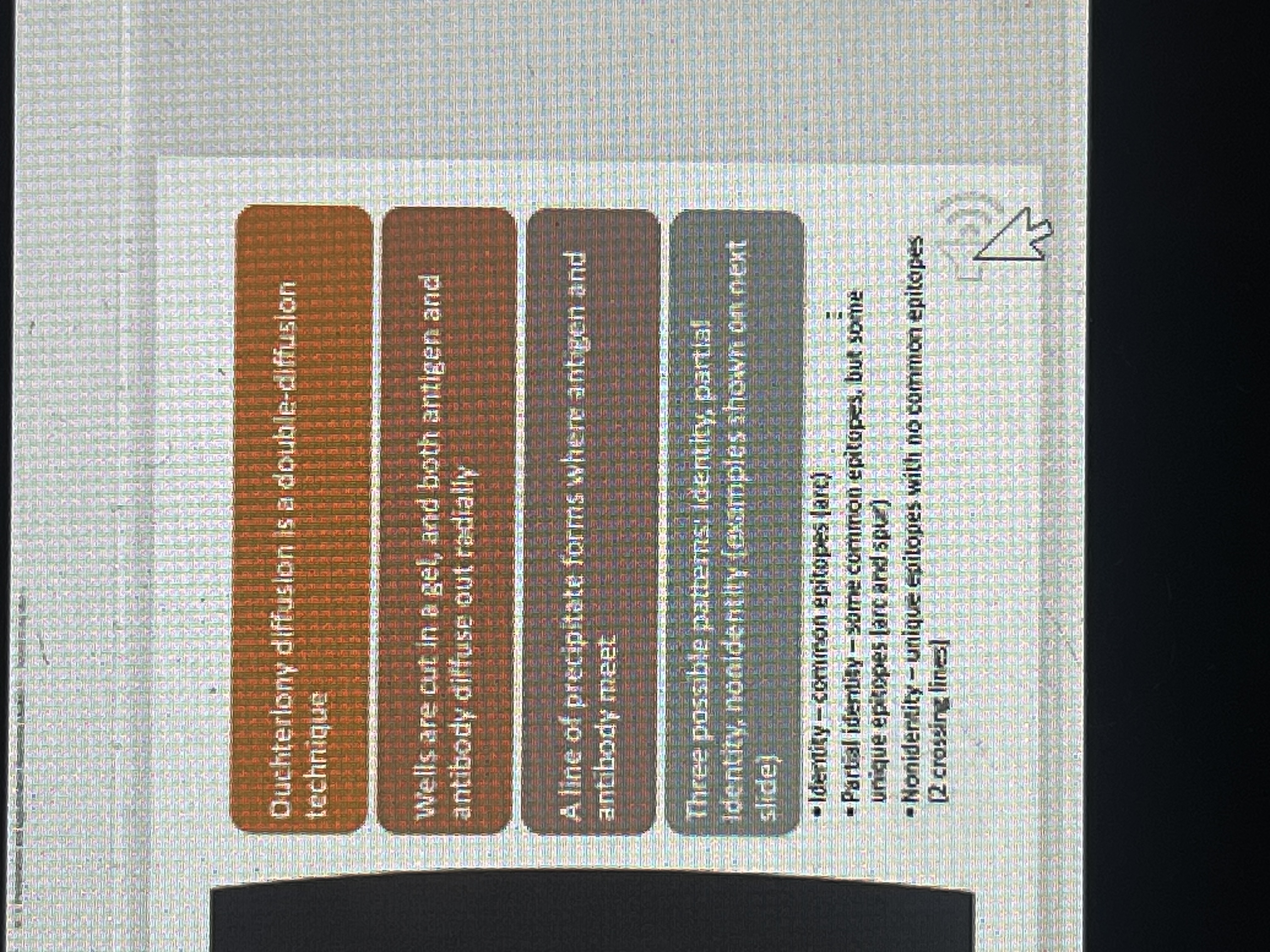
Precipitation Reactions: Ouchterlony Patterns
Labor intensive and need experience to read, but still used to identify some fungal antigens
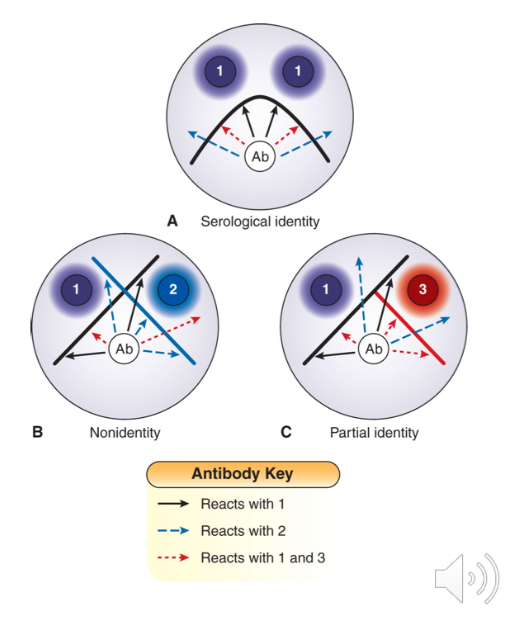
Precipitation: Immunoelectrophoresis
Immunoelectrophoresis combines separation of a complex of antigens by electrophoresis with immunodiffusion of an antisera.
It aids in the diagnosis and evaluation of disease states affecting the immune system. It is usually requested for analysis of serum proteins and can indicate a rise at the immunoglobulin level. For example, immunoelectrophoresis is also used frequently to diagnose multiple myeloma, a disease affecting the bone marrow.f
Precipitation: Counter immunoelectrophoresis
(CIE)
The principle of Counter Immunoelectrophoresis method is that at pH 8.4 the immunoglobulins will migrate to the negative end of a capillary system if an electric field has been applied to the capillary system. In the same capillary system, many antigens will migrate towards the positive end at that pH. As the antibody and antigen move towards each other in an electric field, they will soon meet in optimal proportion and visible precipitate is formed.
The advantage of CIE
fast Ag/Ab reactions
Precipitation: Immunofixation Electrophoresis
• Immunofixation electrophoresis (IFE) is a double-diffusion technique
• Unknown antigen is electrophoresed, and then antibody
is applied directly to the gel
• Precipitates form where antigen–antibody combination has taken place in the gel
• Wash away unbound antigen and stain for protein
• Technique is used with serum as the antigen to determine over-or underproduction of antibody types slidee)
Interpretation of Immunofixation Electrophoresis results
Immunofixation electrophoresis
This patient has a lot of IgG with lambda light chain (possibly multiple myeloma?)
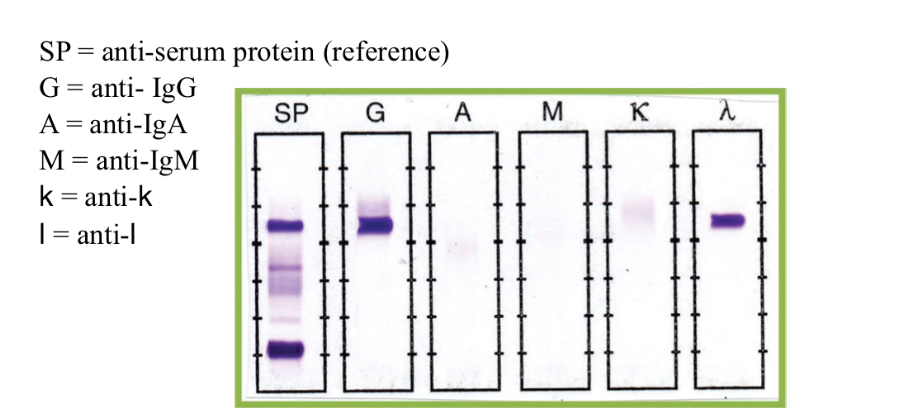
Agglutination
Visible aggregation (clumping) of particles

Two steps of agglutination after antibody- antigen binding
Sensitization
Lattice formation (visible agglutination)
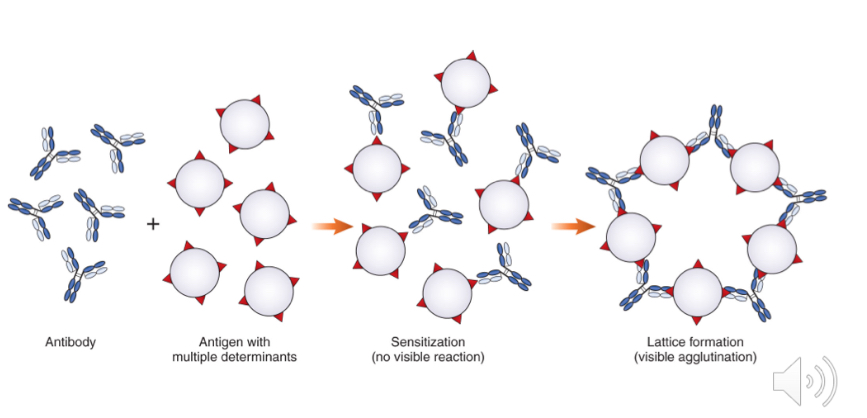
Direct agglutination
The formation of an insoluble network of antigens and their antibodies, when particulate antigen is mixed with specific antiserum.
Direct agglutination reactions are used, for example, in typing blood or in assessing the presence of antibodies against microorganisms.
Widal test
A rapid screening test used to determine the possibility of typhoid fever
Uses Salmonella organisms as particulate antigens to detect antibodies against O (somatic) and H (flagellar) antigens
There are better tests now, but still used in developing countries
Direct agglutination : Hemagglutination
Involves red blood cells ABO blood group typing
Agglutination of RBC’s using IgM specific for different blood group types
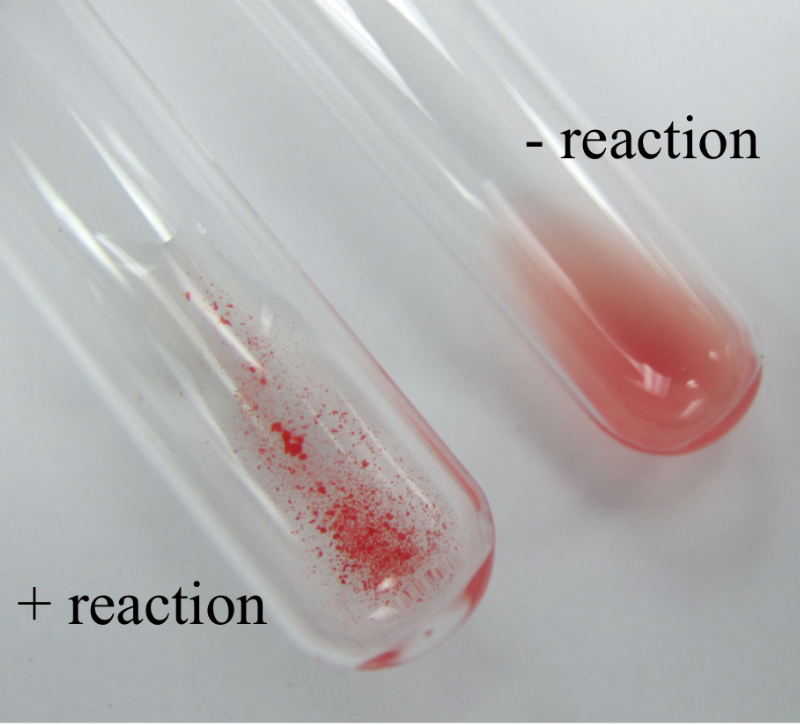
Grading of agglutination reactions
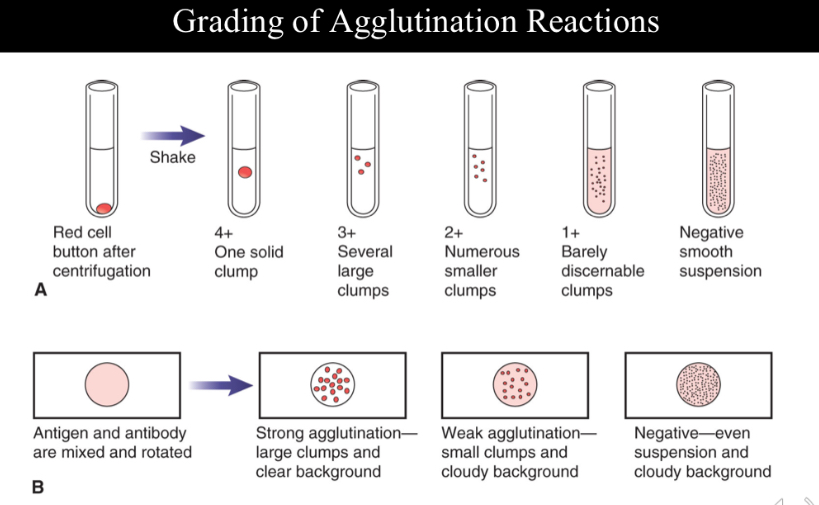
Passive (or indirect) agglutination
Employs particles that are coated with antigens not normally found on their surfaces
Examples of particles:
Erythrocytes, latex beads, gelatin, silicates
Synthetic beads or particles (provide consistency, uniformity, and stability)
Reverse passive agglutination
Instead of antigens attached to surface, antibodies with known specificities are
Process
Antibody is attached to the carrier particle
Agglutination occurs if antigen is present in patient sample
Common applications
Rapid identification of antigens from infectious agents (e.g., Group B Streptococcus, Staphylococcus aureus, streptococcal groups A and B, rotavirus, and Cryptococcus neoformans)
Detecting soluble antigens in urine, spinal fluid, serum
Reverse Passive and Passive Agglutination Reactions
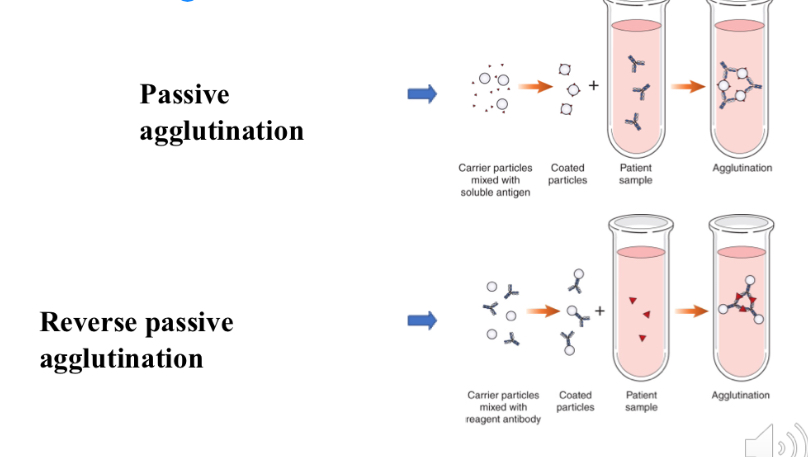
Agglutination inhibition
Is based on competition between particulate and soluble antigens for limited antibody-combining sites
Lack of agglutination = positive reaction
Used to detect antibodies to certain viruses, such as rubella, mumps, measles, influenza, parainfluenza, HBV, herpes virus, respiratory syncytial virus, and adenovirus
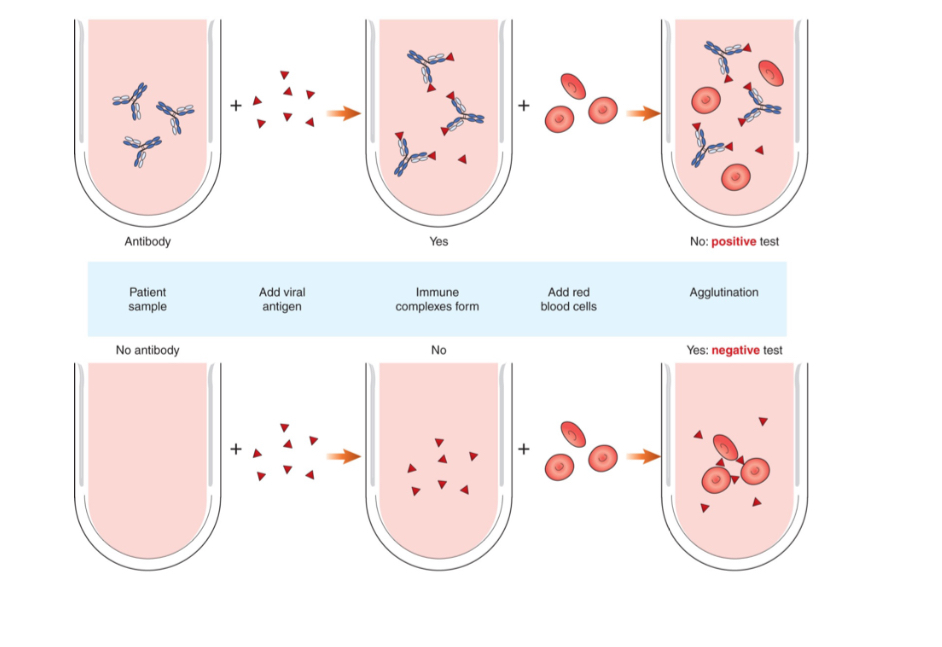
Hemagglutination Inhibition Reactions: in the presence of certain viruses
RBCs spontaneously agglutinate.
Comparison of Agglutination Reactions
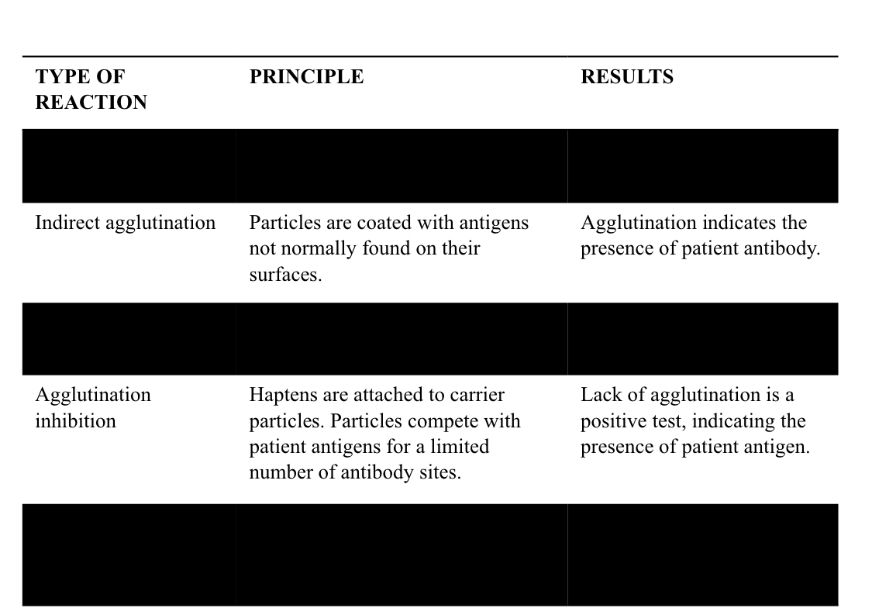
Particle-counting immunoassay (PACIA)
Uses nephelometry to increase sensitivity of reactions
Nephelometry measures light reflected off of particles
Involves a laser in an optical particle counter to measure the number of residual nonagglutinating particles in a specimen
Agglutinated particles will not be counted
The higher the amount of agglutination, the fewer residual nonagglutinating particles remain
Measures serum proteins, therapeutic drugs, tumor markers, and certain viral antigens
Nephelometry measures
light reflected off of particles
Particle-counting immunoassay Would be used to measure what?
serum proteins, therapeutic drugs, tumor markers, and certain viral antigens
Quality control and quality assurance
Avoid cross-reactivity by using a monoclonal antibody directed
against an antigenic determinant unique to a particular antigen
• Store reagents properly, and check expiration dates
• Account for sensitivity and specificity of specific test kits
used
• Be aware that a negative result does not rule out presence of the
disease or antigen
Precipitation: Ring test procedure
The ring test is a simple serological technique that illustrates the precipitin reaction in solution.
• Antiserum is introduced into a small diameter test tube, and the antigen is then carefully added to form a distinct upper layer. After 4 hours incubation a ring of precipitate forms at the point of contact in the presence of antigen-antibody reaction.
• To detect the precipitin reaction, a series of dilutions of the antigen is used, because both insufficient and excessive antigen amounts of antigen will prevent the formation of a visible precipitate.
